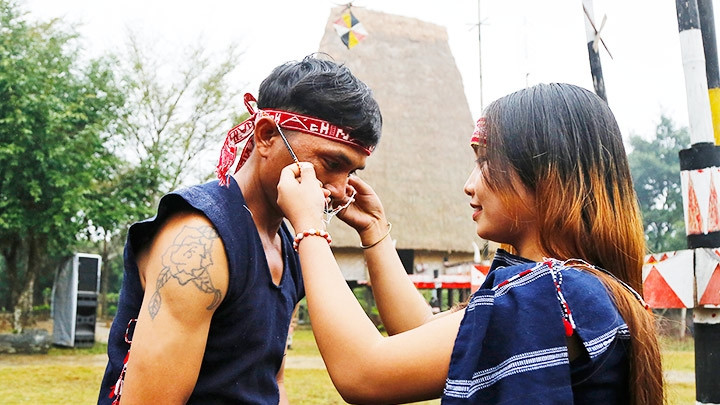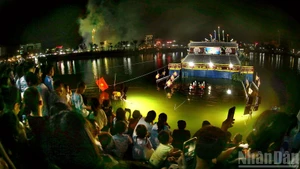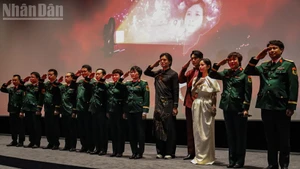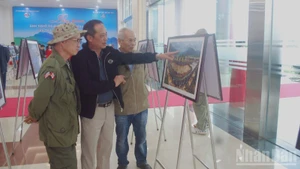According to Dinh Moi, a staff at the Centre for Culture, Information and Sports of K’Bang District in Gia Lai Province, the traditional wedding of the Bahnar people is attended by the entire community, especially the village’s influential people.
Dinh Moi said that when a young Bahnar couple decides to tie their knot, they will inform their matchmaker, who will represent them in meeting with the village’s elders and the two families to ask for their approval.
When the marriage receives their parental approval, the matchmaker will discuss whether the wedding will take place at the house of the bride or groom first. For those who live in the same village, the ceremony will be held at the bride’s house first.
The wedding often takes place in the last months of the year, after the harvesting season. The wedding day often falls on middle day of the month when the moon is full as it is considered the best time to celebrate blessed things. A wedding is a festival of the whole village, and it takes place within one day.
The villagers will join hands to prepare for the wedding day. In addition to ‘ruou can’ (rice wine drank from the jar through straws), pork, and rooster, offerings must also include two traditional scarves, two spools of thread, two wooden knives, and two strings of cooked pork and pork liver. The offerings are hung on a ‘gung’ pole - a sacred pole installed in the middle of the communal house.
The couple exchange wedding necklaces after they say their vows. The matchmaker reads an oath that if the husband leaves the wife or vice versa, he will be fined with a buffalo, a quintal of pig, and 50 jars of wine.
Once the exchange of necklaces is complete, the couple officially becomes husband and wife. The villagers drink wine, make offerings together and join dances until the evening to celebrate the couple’s happiness.
After the wedding, which is organised at the communal house, the couple will return to the bridge’s family. At the entrance, the groom goes first and then his bride, they must step over a hoe with a lit candle on top, and then extinguish the candle.
Notably, the weeding goers will bring burning candles during the journey when the bride comes to the communal house for traditional ritual and then return to her family. The beeswax candles are prepared by the bride’s family beforehand. Everyone must try to keep the candles from going out during the journey to pray that the couple may live together forever.
On the wedding night, the newlyweds must stay awake together to keep their candle flaming all night. It is believed that whoever goes to bed first will have bad luck. Only when the rooster crows in the morning may they go to bed. Staying up together all night symbolises their wish of being together until the end of life.
Following the wedding, the newlyweds will live with the bride’s family for two or three years before moving to the groom’s family for another two or three years and so on, as a way to express the gratitude to the two parents.
After several years, when the couple can afford to have their own house, they will move out.
Selected images from the reproduction of the Bahnar people’s traditional wedding at the Vietnam National Village for Ethnic Culture and Tourism:

Strings of cooked pork and pork liver are indispensable offerings in the traditional wedding of the Bahnar people. (Photo: NDO/Thanh Dat)

The offerings are hung on ‘gung’ bamboo pole. (Photo: NDO/Thanh Dat)

The villagers drink wine, make offerings together and join dances until the evening to celebrate the couple’s happiness. (Photo: NDO/Khieu Minh)

The villagers drink wine, make offerings together and join dances until the evening to celebrate the couple’s happiness. (Photo: NDO/Khieu Minh)

A wedding is a festival of the whole village (Photo: NDO/Khieu Minh)
















